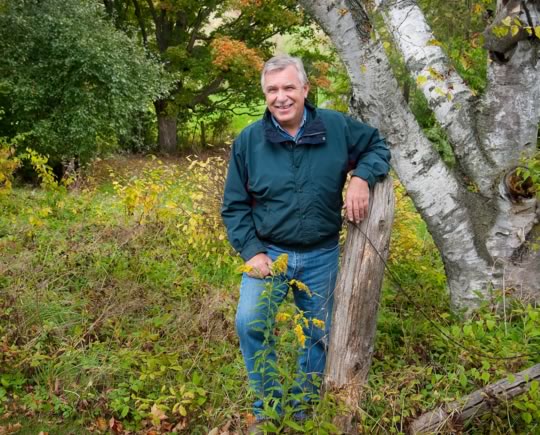Tree Crickets
Singing tree crickets are beautiful. They raise diaphanous wings like miniature sails and vibrate them as they trill their songs.
Listen to the songs of the tree crickets in the videos below. Those pleasant trills are part of our late summer and early autumn soundscapes, even in our towns and cities. But if we even notice at all, I’d venture that very few of us ever pause to wonder who the singers are. A pity, because the singers are lovely.
Until recently I too was unaware of these common singers. This astonishes me because I’ve devoted much of my life to learning about nature. It’s also humbling. What other wonders am I missing?
In mid-October I spent two blissful hours in a windswept Niagara Escarpment meadow. The sky was blue, the air warm and the tree crickets were trilling all around me. I decided to look for one.
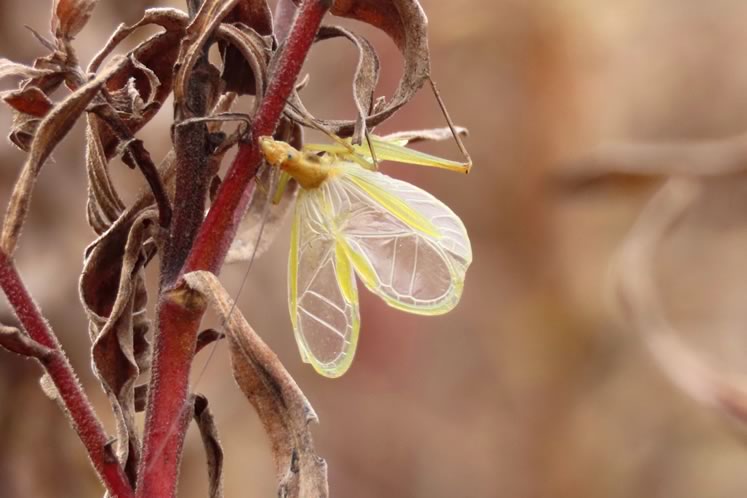
Singing black-horned tree cricket. Photo by Don Scallen.
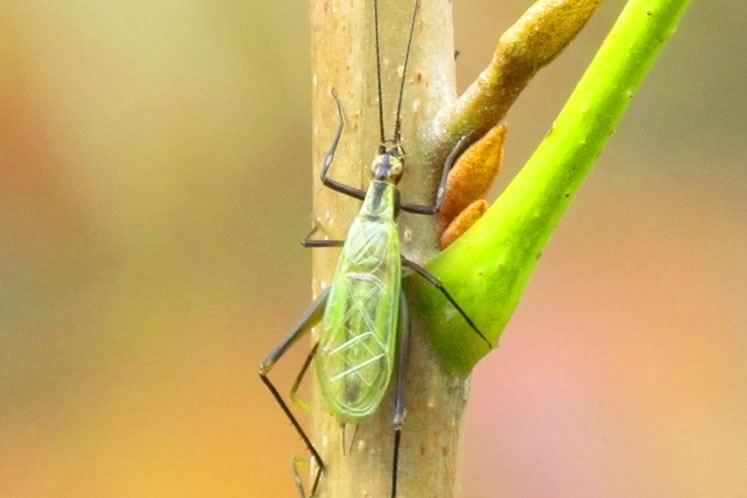
Black-horned tree cricket. Photo by Don Scallen.
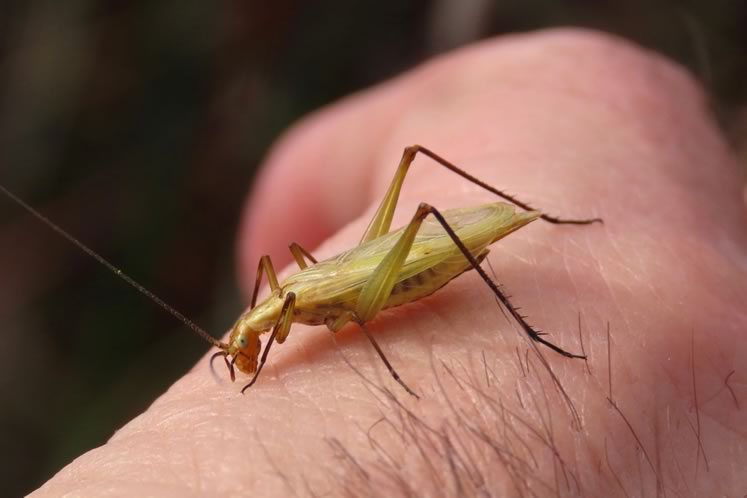
Black-horned tree cricket on hand. Photo by Don Scallen.
Every time I got close, however, the singer would stop singing. Having no particular place to go, I sat amongst the goldenrod and waited. Soon a tree cricket began calling again. Being small and green, it took me some time to see him (like birds, male tree crickets do most of the singing), but there he was on a goldenrod stalk, wings spread and trilling.
Singing tree crickets are beautiful. They raise diaphanous wings like miniature sails and vibrate them as they trill their songs.
I had found my tree cricket and then, unexpectedly, one found me. He climbed onto my left hand and began to nibble, enjoying the savory taste of salt or dry skin perhaps. I could feel tiny pin pricks as his mandibles went to work. After appreciating this cross-species interaction for ten minutes or so, I gently placed him back on a goldenrod stem.
I’m glad my ears are finally tuned to the tree cricket channel. I look forward to meeting more of these diminutive singers next year and perhaps even offering them a hand to snack on!
Related Stories
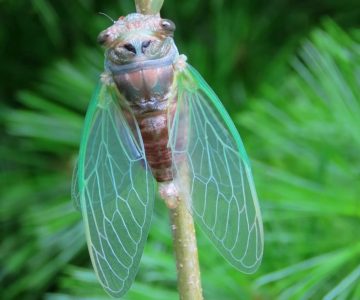
Singing Insects
Sep 8, 2020 | | Notes from the WildYou likely won’t see many of these without a little dedicated searching.

Hopping and Walkin’ in the Rain
Oct 15, 2020 | | Notes from the WildThis is the time of year to get out after dark and explore… especially as the rain falls.
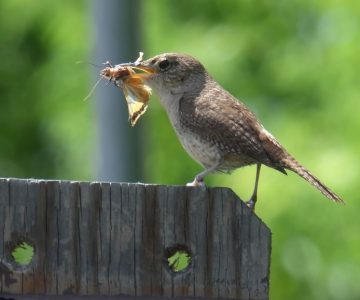
Birdsong – Brought to You by Bugs
Jul 4, 2018 | | Notes from the WildI recently had the pleasure of watching a pair of house wren parents feed their babies in a backyard nest box.
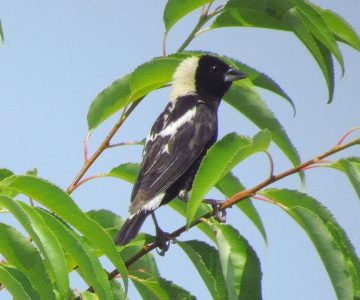
Bobolinks, Grasslands and Forks of the Credit Provincial Park
Jul 25, 2012 | | Notes from the WildBobolinks, though, are only one patch in the quilt of the glorious grassland ecosystem that exists at the Forks.
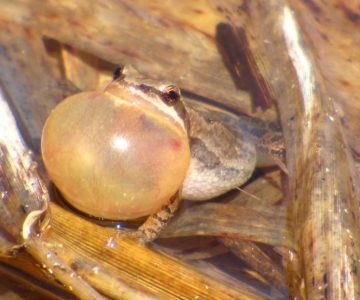
Chorus Frogs
May 14, 2018 | | BlogsChorus frogs are vulnerable to a who’s who of predators from ground-foraging birds, to shrews, to big spiders to small snakes.
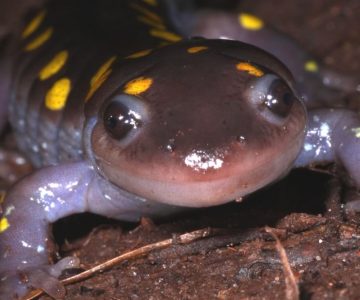
CSI: Natureworld The Case of Burying Beetle Bob
Nov 2, 2018 | | Notes from the WildA CSI probe into Bob’s disappearance has revealed damning evidence linking Sam to the incident!
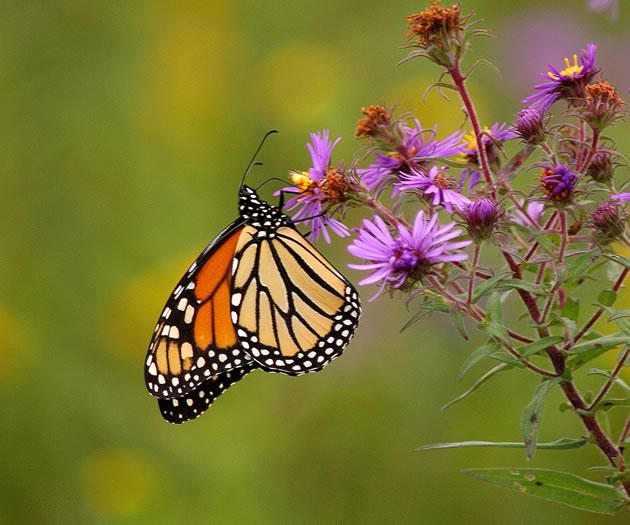
In Defence of Meadows
Sep 16, 2016 | | EnvironmentToo often belittled as “idle” land awaiting development – or “rescued” by reforestation – meadows deserve the same protection and respect as our woodlands and wetlands.



